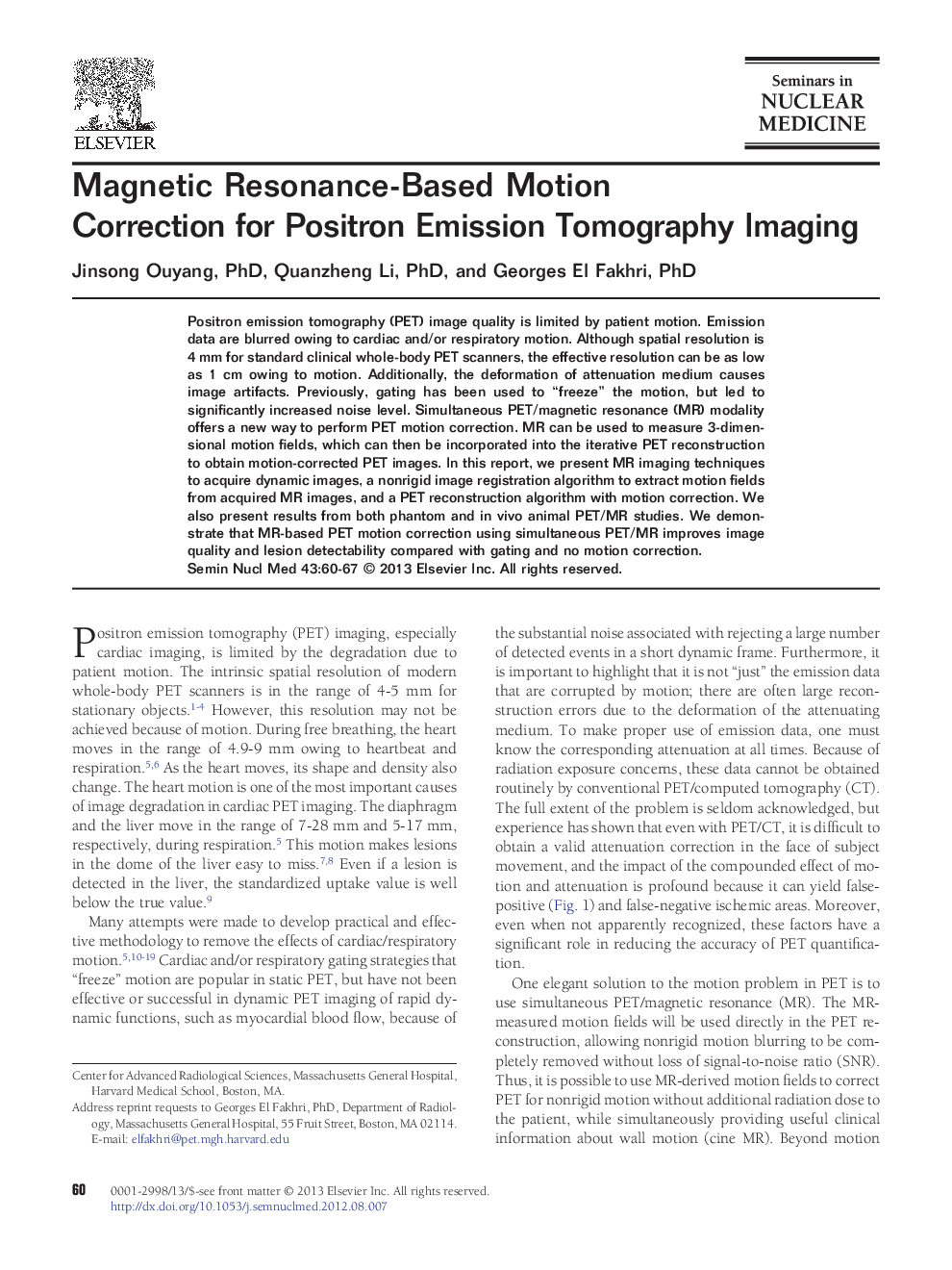| Article ID | Journal | Published Year | Pages | File Type |
|---|---|---|---|---|
| 4251212 | Seminars in Nuclear Medicine | 2013 | 8 Pages |
Positron emission tomography (PET) image quality is limited by patient motion. Emission data are blurred owing to cardiac and/or respiratory motion. Although spatial resolution is 4 mm for standard clinical whole-body PET scanners, the effective resolution can be as low as 1 cm owing to motion. Additionally, the deformation of attenuation medium causes image artifacts. Previously, gating has been used to “freeze” the motion, but led to significantly increased noise level. Simultaneous PET/magnetic resonance (MR) modality offers a new way to perform PET motion correction. MR can be used to measure 3-dimensional motion fields, which can then be incorporated into the iterative PET reconstruction to obtain motion-corrected PET images. In this report, we present MR imaging techniques to acquire dynamic images, a nonrigid image registration algorithm to extract motion fields from acquired MR images, and a PET reconstruction algorithm with motion correction. We also present results from both phantom and in vivo animal PET/MR studies. We demonstrate that MR-based PET motion correction using simultaneous PET/MR improves image quality and lesion detectability compared with gating and no motion correction.
